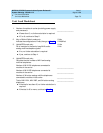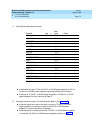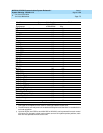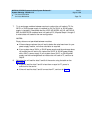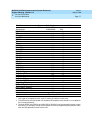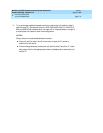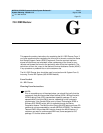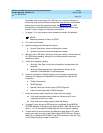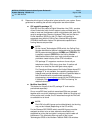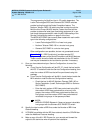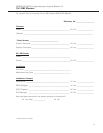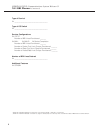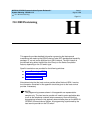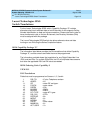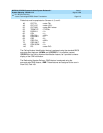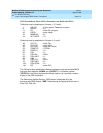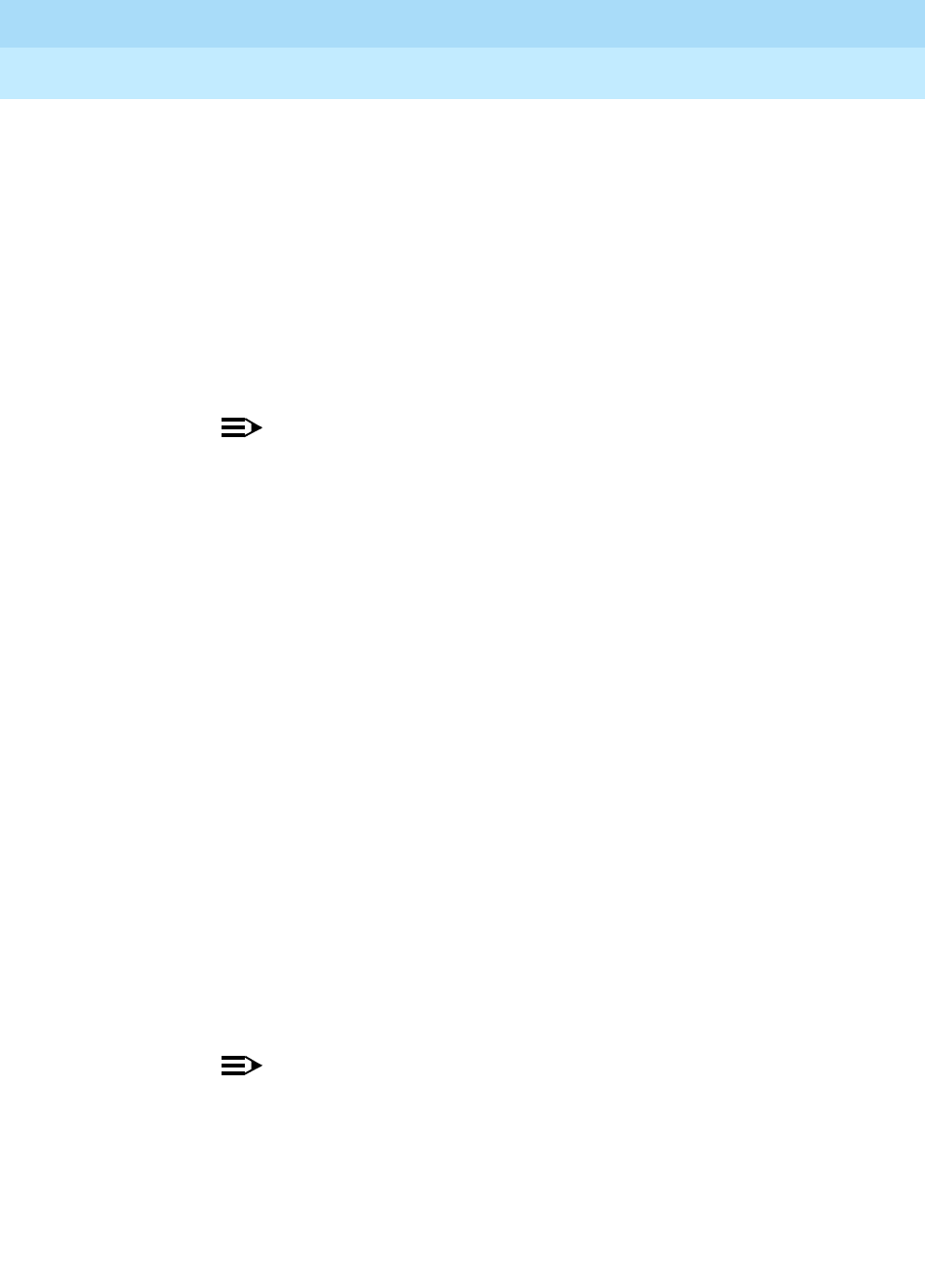
MERLIN LEGENDCommunications System Release 6.1
System Planning
555-661-112
Issue 1
August 1998
NI-1 BRI Review
Page G-3
G
10. Determine which type of configuration is best suited for your system. Some
guidelines for selecting the service configuration are shown below:
■ IOC capability package “S”
Each BRI line, also called a Digital Subscriber Line (DSL), consists
of two B-channels, both of which support voice and data calls. In
order to have two simultaneous voice or digital data calls, each DSL
must be assigned two Directory Numbers (DNs) and two Service
Profile Identifiers (SPIDs) by the CO. Basic call handling is
supported along with the Calling Party Number/Billing Number
(CPN/BN) identification feature. No packet data capabilities or
hunting features are provided.
NOTE:
On the Lucent Technologies 5ESS switch, the Calling Party
Number identification feature is assigned using the standard
BRCS preconstructed features /LICNDA and /CPCOFA. If it
is possible, request /CPCPFA for the Calling Number
Identification feature from your local service provider as it
provides a clearer display of the CPN information.
IOC package “S” supports a maximum of one call per
telephone number (DN) at any given time. If another call
comes in on that line, the caller gets a busy signal.
For Canada and those areas of the United States where IOC
package “S” is not available, the capability package that is
ordered must provide alternate voice/circuit-switched data on
both B-channels with no packet data capability or
supplementary voice features except for the CPN/BN feature
if available. See Appendix H, “NI-1 BRI Provisioning” for
detailed information.
■ Multiline Hunt (MLH)
This feature is not part of the IOC package “S” and must be
provisioned separately.
One or more BRI lines (and their associated DNs) are grouped
together with one (main) telephone number. When an incoming call
arrives at the main number, the CO searches through the DNs until
an available line is found.
NOTE:
Each DN in the MLH group can be dialed directly, but hunting
may not be initiated (depending on the CO switch).
For the Siemens SSD EWSD switch, each MLH group must be
assigned as either voice or data; alternate voice/data is not
supported as mixing the two types in one group could create call
interference. This constraint does not apply to the Lucent
Technologies 5ESS or the Northern Telecom DMS-100 switches.



